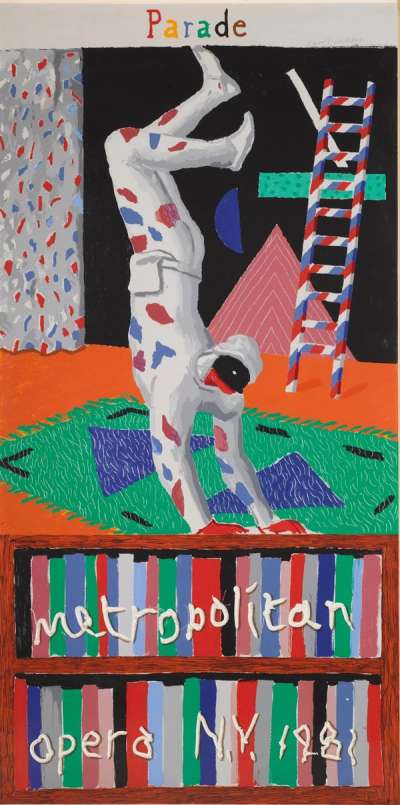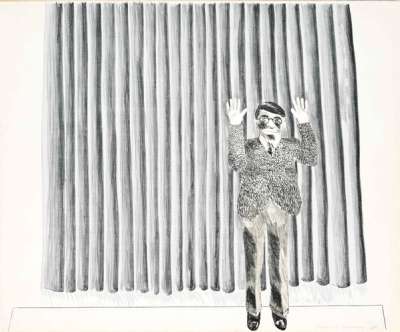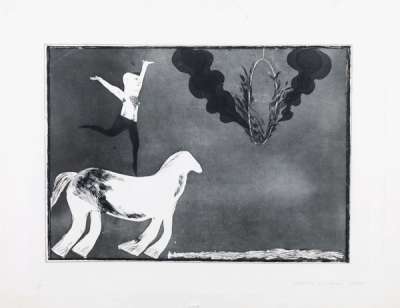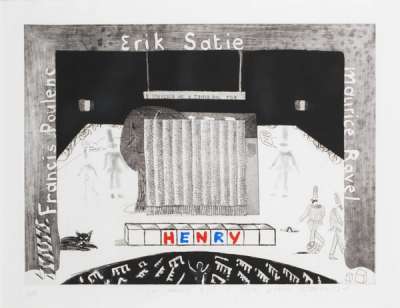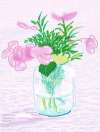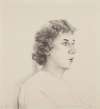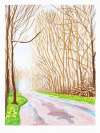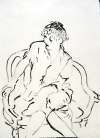Hockney
And The Stage
This series brings together numerous prints from across David Hockney’s career representing his love for theatre and opera and demonstrating his ability to trick and entertain the viewer through optical devices such as trompe l’oeil and playful compositions.
David Hockney Hockney And The Stage For sale
Hockney And The Stage Value (5 Years)
With £20593 in the past 12 months, David Hockney's Hockney And The Stage series is one of the most actively traded in the market. Prices have varied significantly – from £387 to £12000 – driven by fluctuations in factors like condition, provenance, and market timing. Over the past 12 months, the average selling price was £6864, with an average annual growth rate of 8.56% across the series.
Hockney And The Stage Market value
Auction Results
| Artwork | Auction Date | Auction House | Return to Seller | Hammer Price | Buyer Paid |
|---|---|---|---|---|---|
 A Souvenir Of A Triple Bill For Andrea Velis David Hockney Signed Print | 23 Jul 2024 | Christie's New York | £3,060 | £3,600 | £4,900 |
 Figure By A Curtain David Hockney Signed Print | 15 Nov 2023 | Sotheby's Online | £8,925 | £10,500 | £14,000 |
 The Acrobat David Hockney Signed Print | 15 Nov 2023 | Sotheby's Online | £3,868 | £4,550 | £6,000 |
 Parade (acrobat) David Hockney Signed Print | 18 Mar 2021 | Mallet Japan | £1,190 | £1,400 | £1,600 |
Sell Your Art
with Us
with Us
Join Our Network of Collectors. Buy, Sell and Track Demand
Meaning & Analysis
Since the 1960s Hockney has been producing prints and paintings inspired by the world of theatre and set design, as demonstrated in this series. Just 12 years earlier he had produced what has become one of his most famous series ofprints, based on the original set by Hogarth. This was not the beginning of his fascination with the stage however; since the 1960s he had been producing prints and paintings inspired by the world of the theatre, including the famous Figure by a Curtain of 1964 – based on the 1963 painting Play within a Play – which features his friend and dealer John Kasmin in front of a curtain, trapped, as Hockney put it, “in this small space between art and life”, to the etching from the same year entitled The Acrobat, which shows a figure stood on a horse moving towards a flaming hoop in an apparent recreation of a circus scene.
In the ’80s Hockney continued to work across the medium of print to produce posters for the Metropolitan Opera in New York, including his print for composer Eric Satie’s Parade. Throughout this series the motif of the curtain is recurrent. Presenting an opportunity to explore the boundaries between picture and plane, background and foreground, the artist was fascinated with the possibilities of trompe l’oeil to affect the perspective of the composition and the viewer’s perception of the subject. Here the stage too becomes the perfect setting for the arrangement of elements in space, offering a border to work within, an artificial enclosure as fruitful for Hockney as his swimming pools or his trompe l’oeil frames in the series entitled A Hollywood Collection.
This series can also be linked to Some New Prints which stem from a suite of paintings Hockney made in 1992 after finishing a commission for set designs for Die Frau Ohne Schatten. While different in subject and style, this link shows Hockney’s ongoing fascination with the stage, both as a new outlet for his work, and as a framing device. As an artist steeped in literary and artistic references it is not surprising that Hockney has enjoyed an enduring relationship with the theatre and opera. Like the many modernists who came to influence him, his work is perfectly suited to the fabulations of drama and his talents for graphic art are evident in the many posters he made to accompany these productions or exhibitions of his designs. With works such as Parade and Acrobat we see him embracing the more playful side of his art, evoking the spirit of the circus to entertain and delight his audience.
